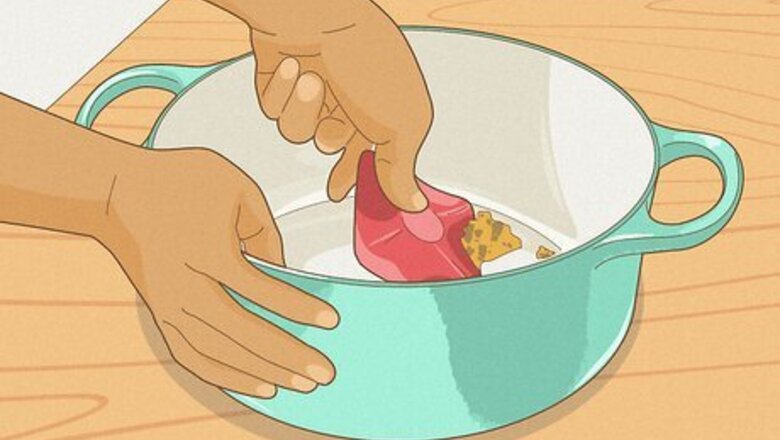
views
How to Clean Enameled Cast Iron Cookware

Let the pan cool completely and scrape off food. Set your enameled cast iron Dutch oven or pan on your stovetop to cool. Immediately washing a hot, enameled cast iron pan with cooler water can cause it to crack. Once the pan is cool, use a silicone or plastic scraper to remove any baked-on or burnt pieces of food. Avoid using steel wool or metal scrapers that can create small scratches in the enamel.
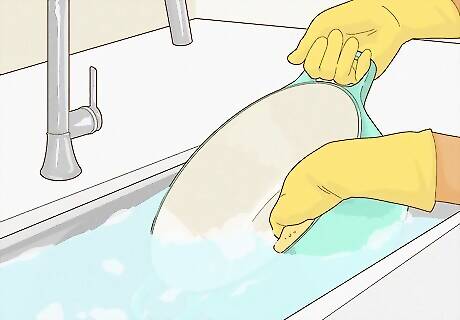
Wash the enameled cast iron pan in warm, soapy water. Cleaning expert Raymond Chiu recommends washing the pan with “warm water and dish soap [and] scrubbing gently with a sponge or soft cloth.” Remember to clean the exterior and bottom of your pan as well. Although your enameled cast iron dishware may be marketed as dishwasher safe, it’s recommended that you hand wash it. Harsh dishwasher detergents can wear away at the enamel finish and compromise the durability of your pan.
How to Remove Stains & Stuck-on Food from Enameled Cast Iron
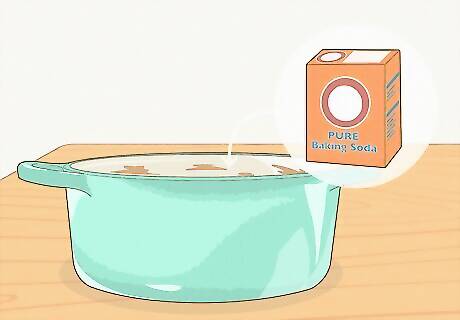
Remove stuck-on food with baking soda. Sprinkle a small amount of dry baking soda onto a dampened dishcloth. Gently scrub your enameled cast iron pan with the dishcloth. If dry-scrubbing with baking soda doesn’t remove the baked-on food from your dishware, add 2 cups (470 mL) of water and ¼ cup (50g) baking soda to the enameled cast iron pan. Heat the baking soda and water mixture on the stove until boiling. Wait for the water to cool before removing the food with a plastic or silicone scraper. Alternatively, fill the pan with warm, soapy water and allow it to soak for several hours before attempting to scrape off the food. Baking soda is a great option for removing food stains from enamelware, explains house cleaning professional Raymond Chiu, “because it’s abrasive enough to remove tough marks from enamel, but not enough to damage the material.”

Get rid of stains with a baking soda paste. Cleaning expert Raymond Chiu says, “Make a mixture of baking soda and warm water so it forms a thick paste. Use a soft-bristled brush to apply the mixture onto the area and scrub out the stains from the enamel.” Chiu advises to “rinse the enamel using water [and] if the stains are still there, use a magic eraser to clean the stains.” “Simply dampen the eraser with water and squeeze out any excess liquid,” instructs Chiu, then “rub the area with the item. Be careful with the eraser as it may be too abrasive on the enamel.” Once you’ve removed the stains, rinse the pan and thoroughly dry it before storing it properly.
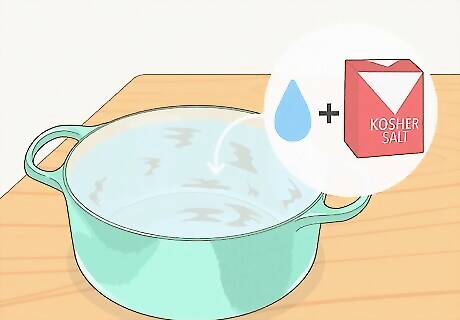
Use kosher salt to remove stains from your pan. Create a paste of coarse kosher salt and tepid water. Coat the enamel cookware with the salt paste. Gently scrub the interior of the dish with a soft bristle scrub brush to remove the stains.
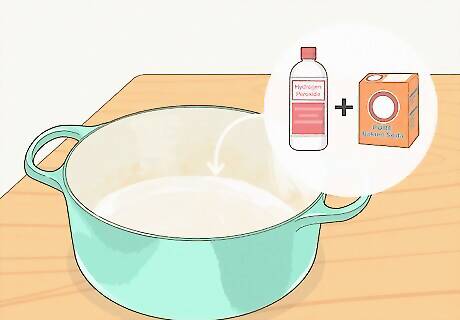
Try lightening stains with hydrogen peroxide. After removing any food burned onto the enameled cast iron, pour the hydrogen peroxide so it’s at least ⁄2 inch (1.3 cm) deep in the pan. Add ¼ cup (50g) of baking soda and heat the pan on the stove until the mixture starts to bubble. Remove the pan from the stovetop and let it soak until cool. Then, clean the pan with warm, soapy water.
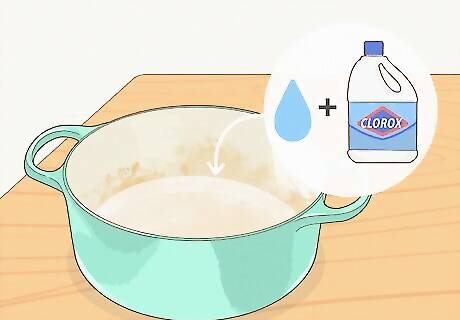
Tackle deep stains in enameled cast iron with chlorine bleach. Mix a solution of 3 tablespoons (44 mL) chlorine bleach to 1 US quart (0.95 L) water. Pour the solution into your enamel cookware and let it soak for 2 to 3 hours. Safely dispose of the bleach solution and wash the cookware in warm, soapy water.
How to Store Enameled Cast Iron Cookware
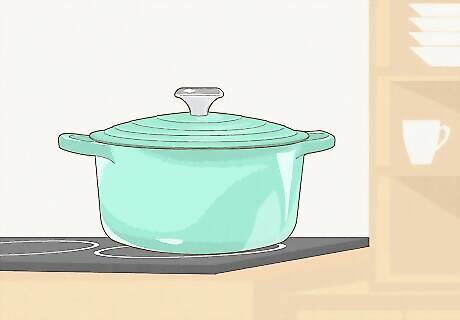
Store enameled cast iron pans on your stovetop. Make sure the pan is completely dry before putting it away or setting it aside after washing. Use pot protectors to prevent any chipping or moisture build-up, or place a kitchen towel between the cookware and its lid. If you have extra burners you don’t use regularly, that’s the easiest place to leave your cast iron Dutch oven or pan. Alternatively, you can store your enamel cookware in any cool and dry place. If you want to marinate something or store leftovers, you can leave the food in your enameled cast iron pan and place it in the fridge for a few days.
Cooking with Enameled Cast Iron
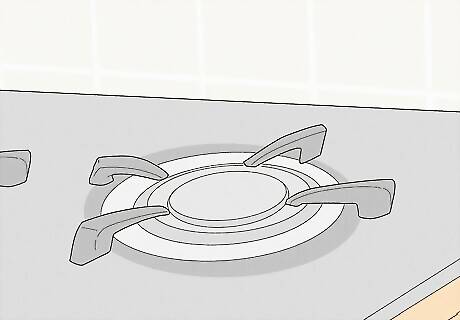
Use your enameled cast iron on the stovetop or in the oven. If you use it on the stove, place it on the burner that’s the closest size to your pan. Cook on medium heat for best results and to prevent burning your pan or any cooked-on food from sticking to the bottom. If you bake your enameled pan in the oven, limit the temperature to 500 °C (932 °F) maximum. It’s okay to preheat the pan empty in the oven. However, if you use it on the stovetop, pour in a spoonful of oil as it preheats.
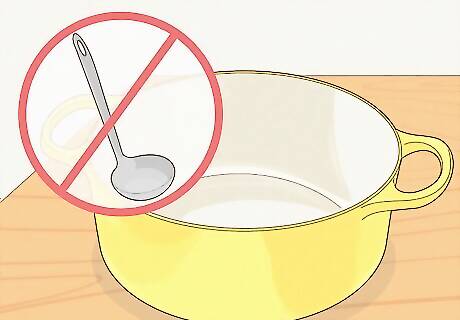
Avoid using metal cooking utensils with an enameled cast iron. Use wooden, silicone, or nylon utensils to cook with. Metal dishware can scrape or scratch the enamel and expose the cast iron underneath. If serving food straight from your cookware, make sure to use a trivet before placing the dutch oven or pan directly on your table.
What is enameled cast iron?

Enameled cast iron is cast iron with a protective enamel glaze. The enamel coating creates a non-porous finish that prevents the cast iron underneath from rusting. It also makes the cookware easier to wash and evenly conducts heat to cook your meals to perfection. Regular cast iron, on the other hand, is porous. You must care for a cast iron pan according to specific instructions, including not using dish soap and seasoning it after each wash. Over time, however, the seasoning on regular cast iron can add to the flavor and complexity of the dishes you cook in it. Regular cast iron is also non-stick, unlike enameled cast iron. However, enameled cast iron pans and Dutch ovens are easier to maintain and ideal for braises, stews, and sauces.

The benefits of enameled cast iron include easy cleaning and durability. Enameled cast iron pans and Dutch ovens are easily cleaned with a sponge and dish soap. These pans are also incredibly durable and aren’t damaged by acidic or alkaline foods like citrus, tomatoes, and wine. High-quality enameled cast iron cookware can also be considered a heritage piece. Because they’re made to be strong and long-lasting, they can be passed down through generations if properly cared for.














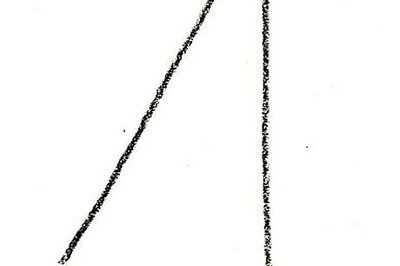

Comments
0 comment